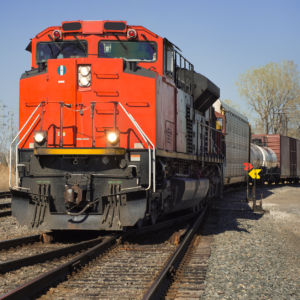After a full year of lockdowns and social distancing, Americans are understandably eager to once again get back to work and travel this summer. With hopes that economic activity is set to roar back in the wake of the ongoing vaccination drive, last week the House sub-committee on Railroads, Pipelines, and Hazardous Materials held a hearing on how rail can meet America’s low-emissions transportation needs.
While rail has huge potential, its success is not guaranteed; lawmakers in D.C. need to build on the historic achievements that have made rail one of the most efficient forms of transportation in America.
Although locomotives and railroads might sound like relics from a bygone Western film, rail transportation is incredibly competitive when it comes to greenhouse emissions. According to the Association of American Railroads—an industry trade group—freight rail is on average three to four times more fuel-efficient than trucks on the roads.
Similarly, a 2019 International Energy Agency report found the rapid expansion of rail across the globe could slash the world’s rising CO2 emissions and air pollution. That point was echoed by a report last year from the international Energy Transitions Commission, suggesting that shifting towards greater rail and shipping, coupled with streamlining transportation logistics, could cut CO2 emissions by 20 percent.
More efficient rail technology has played a key part in slashing the industry’s emissions and pollution. Locomotives manufactured after 2015 are subject to the most stringent level of emissions standards, known as the federal ‘Tier 4’ regulations. Calculations by the California Air Resources Board suggest that even in 2030, Tier 4 trains will continue to produce a mere fraction of the pollutants and emissions of truck hauling. As more of America’s rail fleet is replaced with these newer models, average emissions will naturally fall even further.
Keeping America’s low emissions rolling stock on track is even more important due to consumers’ strong preferences for action on climate change. Through national surveys conducted in early 2020, the Pew Research Center found an overwhelming majority of both Republicans and Democrats supported some form of action on carbon emissions.
Despite the potential for further low emissions rail expansion, lawmakers in Washington need to learn from the industry’s past challenges. After decades of decline, in 1980 the Staggers Act brought America’s railroads back from the brink, injected some much overdue competition and flexibility into the industry, and gave consumers over $10 billion in annual savings.
While the rail industry is not yet carbon neutral, federal Tier 4 regulations have set America’s railroads in the right direction. In the interim, these gains should not be counteracted with policies that punish low emissions modes of transport. A return to the pre-1980 world of over-regulation stands to incentivize the use of more detrimental forms of hauling—such as trucking.
Renewed political interest in the railroads provides an excellent opportunity to support America’s transition to a more environmentally friendly transportation network. Drawing lessons from the rail industry’s historic demise and revival, it is clear that competition has played a crucial role in making rail a viable mode of low emissions transport. For emissions-conscious consumers, it should be reassuring to know that rail provides an additional way for freight and commuters to move across the country while giving the environment a free ride.

